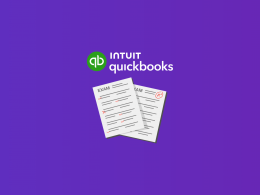Afterpay is a popular payment option for businesses and their customers alike. It allows customers to purchase items and pay in installments over some time without the need for a credit card or other loan. As a merchant, understanding how Afterpay fees work is essential to ensure that you’re offering customers a desirable payment option while managing your costs.
Knowing how Afterpay fees are calculated and your obligations as a business will help you make the best decisions for your business. In this article, we’ll look at what merchants need to know about Afterpay fees.
What are Afterpay fees?
Afterpay fees are the amount a business must pay whenever a customer purchases under an Afterpay installment plan. Afterpay fees are charged on a per-item basis, which means fees are charged based on the item, regardless of whether it’s a part of a group of items. Several other things may influence the difference in Afterpay, including the customers’ state of residence and the payment method used to purchase.
These fees typically range from $0 to $15 per item. Afterpay fees are only assessed during the period when a customer has an open installment payment plan. For example, if a customer purchases $100 worth of goods and pays for the items monthly over two months, the merchant will only be charged a total of $15 in Afterpay fees.
How are Afterpay fees calculated?
Afterpay fees are calculated based on the purchase amount and the customer’s state of residence. The fee formula is as follows:
Purchase amount × Customer state fee percentage × Merchant fee percentage
The customer state fee percentage refers to the fee percentage associated with the customer’s state of residence. The fee percentage varies based on the state in which the customer lives, as shown below:
| Territory | Afterpay Daily, % | Afterpay Weekly, % | Afterpay Monthly, % |
| Customers in New South Wales, ACT and Northern Territory | 10 | 15 | 20 |
| Customers in Queensland | 12.5 | 18 | 25 |
| Customers in Victoria | 10 | 17 | 25 |
| Customers in South Australia | 10 | 17 | 25 |
| Customers in Western Australia | 10 | 16 | 25 |
| Customers in Tasmania | 10 | 15 | 20 |
| Customers in Northern Territory | 9 | 15 | 20 |
What are the merchants’ obligations when offering Afterpay?
If you decide to offer Afterpay as a payment option, you should be aware of your obligations to your customers. These include:
- Providing customers with a written copy of their rights and obligations when making payment using Afterpay.
- Setting the due date for the first installment payment between one and 14 days after the item is purchased. The final installment payment must be made between seven and 21 days after the first payment is due.
- Resolving any disputes related to Afterpay that you receive from a customer within 14 days of receiving the dispute.
What are the advantages of offering Afterpay?
As with any new payment option, there are benefits to offering Afterpay to your customers. These include:
- Customers who might otherwise not be able to purchase due to their credit history being poor can now access the item.
- Customers can arrange for their credit card or bank account to be charged every month, making it easier for them to manage the payments.
- There are no upfront costs to a merchant to offer Afterpay.
What are the risks of offering Afterpay?
While there are many advantages to offering Afterpay, there are also some risks. These include:
- Customers may be more likely to purchase items they cannot repay.
- There is a risk associated with providing a guarantee to your customer that their monthly payment will be processed.
- If customers are taking advantage of Afterpay, they may be more likely to default on their payment and leave you responsible for the remaining balance.
- Customers who are unable to make their payments monthly are more likely to default on their payments, which could leave you responsible for repaying the full amount due.
What are some best practices for managing Afterpay fees?
There are a few best practices that merchants should follow when managing Afterpay fees, including:
- Offer the option of paying in full, instead of allowing a customer to make monthly payments. This way, all of the fees will be processed by Afterpay, rather than having to pay the fees out of pocket.
- Only offer Afterpay to customers who have a history of paying their bills on time.
- Limit the amount of time that customers have to repay their Afterpay purchases.
- Make sure that you have a clear notice on your website and within your terms and conditions alerting customers to the fees associated with Afterpay.
- Offer a variety of payment options to your customers, including Afterpay, credit cards, and checks
- .
What are the legal implications of offering Afterpay?
Because Afterpay is a type of deferred payment, it is legally considered a loan. As such, if a customer fails to pay back their Afterpay loans, the merchant is responsible for repaying the full amount of the loan. This could mean that your business could be liable for thousands of dollars in Afterpay fees. If you decide to offer Afterpay, you should also consider adding a clause to your acceptance of Afterpay that allows you to terminate the deferred payment arrangement if the customer fails to meet the requirements for maintaining the arrangement.
Conclusion
Afterpay is a payment option that allows customers to purchase items online and pay for them in monthly installments. Merchants can charge a fee for accepting Afterpay, but this only applies when a customer chooses to make payment in monthly installments. Afterpay fees are charged to the merchant per item, are based on the purchase amount, and vary based on the state of residence of the customer. To manage these fees, it is important to offer a variety of payment options to your customers, including Afterpay, and make sure to notify them of the applicable fees. For businesses, offering Afterpay is a great way to increase your sales and reach new customers. However, it is important to understand how Afterpay fees work and make sure that your business is prepared to manage those fees if you decide to offer Afterpay.






